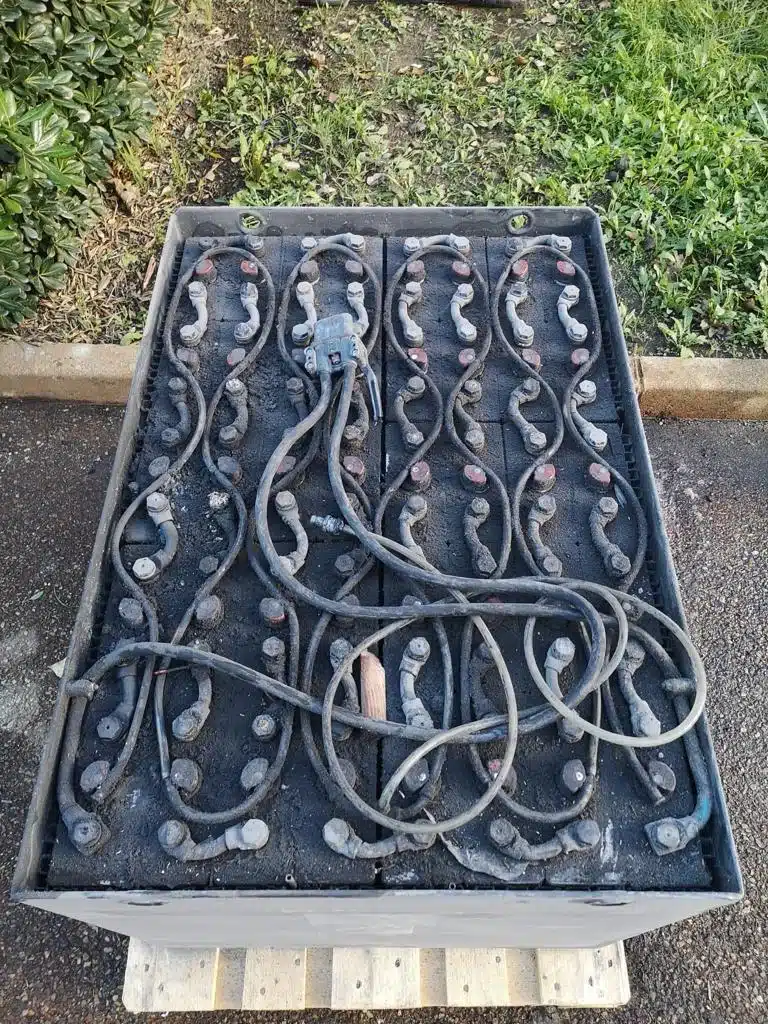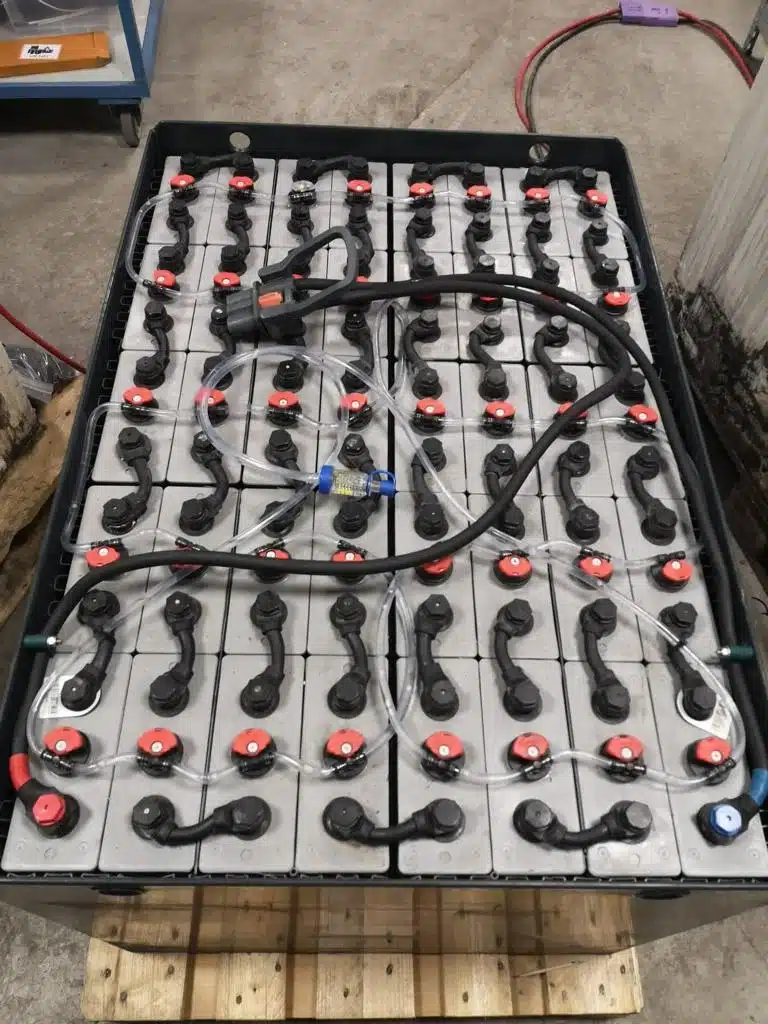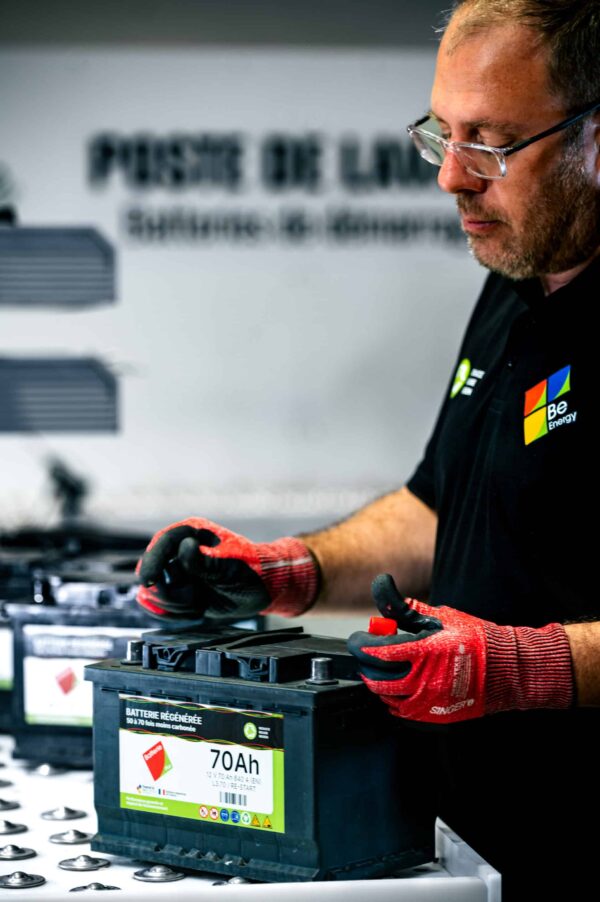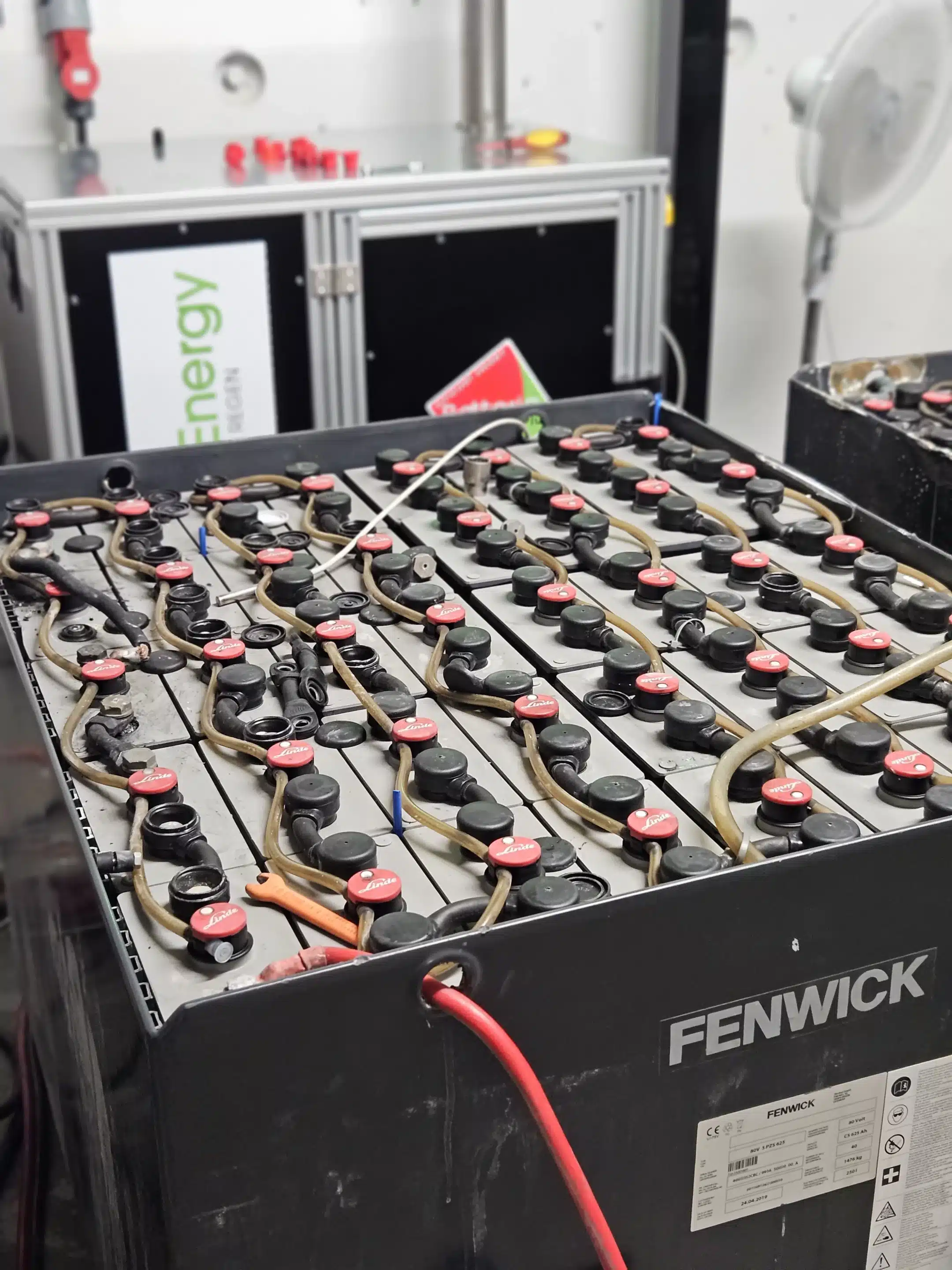Be Energy : Solutions Batteries Plus
LEAD-ACID BATTERIES
How can you tell if a lead-acid battery needs to be regenerated?
Why does your battery no longer hold its charge?
Lead-acid batteries, which are ubiquitous in automobiles, solar energy systems, forklifts, and many other industrial applications, are essential components for the performance of numerous types of equipment.
However, over time, they lose their efficiency, often due to sulfation. Rather than replacing them immediately, it is possible to give them a second life and restore their full potential through regeneration.
But how do you make the right diagnosis?
This article guides you through the essential tests to assess the health of your battery and determine whether it is a candidate for a second life.
Is your battery still in good working order?
However, it’s time to ask yourself some questions if you notice any of the following signs:
- Difficult starting: The engine idles slowly, starting is slow, and the headlights flicker.
- Rapid discharge: The battery loses its charge abnormally quickly, even after being used for a short period of time.
- Poor performance: Equipment that requires a lot of energy malfunctions or operates at reduced power.
- Unstable voltage: The battery voltage fluctuates greatly, ranging from normal to very low.
These symptoms, sometimes coupled with a suspicious odor during charging or excessive water consumption, are clear indicators that your battery needs a thorough diagnosis.
It is at this precise moment that a diagnosis is required in order to determine the cause of this weakness and assess whether a solution, such as regeneration, can be considered.
The diagnosis: a 4-step approach
Only a professional diagnosis can determine with certainty whether regeneration is possible and worthwhile. Our experts follow a multi-step process to assess the condition of your battery.
1. Visual inspection: signs that indicate battery deterioration
Even before you start technical testing, a simple visual inspection can give you an initial indication of the condition of your battery.
- Check the integrity of the casing: Is the battery casing swollen, deformed, or cracked? Swelling is a sign of internal overheating or irreversible overcharging. If this is the case, the battery poses a significant safety risk and requires the intervention of an expert technician.
- Condition of the connectors: Are the connectors corroded? Are the cables and screws damaged? The presence of sulfate on the surface is an indication of sulfation. Regeneration at Be Energy not only treats the battery, but also reconditions all its components to ensure long-term reliability.
- Check for leaks or corrosion: Look at the terminals. Are they covered with a white or greenish powder? Are there traces of electrolyte that has leaked out? Leaks or advanced corrosion are signs of internal damage that affect the normal performance of the battery.
If you notice any of these signs, your battery needs immediate reconditioning to ensure safety and performance.
To prevent this damage, regular maintenance and servicing of your batteries is essential.
If a visual inspection reveals none of these problems and you still notice a drop in performance, a professional diagnosis is required to assess whether your battery needs to be regenerated.

Traction batterie before regeneration

Traction batterie after regeneration
2. Measuring the voltage at rest
Leave the battery at rest for at least 4 to 6 hours after charging or discharging. Use a voltmeter to measure its voltage.
- A healthy 12 V battery will have a voltage between 12.6 V and 12.8 V.
- A voltage below 12 V indicates partial discharge.
- A voltage below 10.5 V is a warning sign: the battery is deeply discharged or has suffered advanced degradation.
If the voltage remains abnormally low after a full recharge, the battery has likely lost a significant amount of its capacity.
3. Checking the electrolyte density
This test is performed using a density meter / hydrometer and only applies to liquid lead-acid batteries. It allows you to check the state of charge of each cell individually. The electrolyte density is a direct indicator of the sulfuric acid concentration. It is measured in g/cm³ and is a direct indicator of the state of charge and internal balance of the cell.
There are two points to check:
- The voltage/density balance per cell: If a 2V cell does not have a density > 1.20 , this indicates an imbalance that requires regeneration.
- Homogeneity between cells: Voltages must be homogeneous to within 0.1V and densities to within 0.01. A larger deviation is a sign of imbalance requiring regeneration.
Measure the density of each cell. A difference of more than 0.03 to 0.05 between cells indicates an internal imbalance or even a defective cell.
If all cells show low but consistent density, this suggests general sulfation, which can be treated by regeneration.
However, if one cell has a significantly lower density than the others, the problem is likely irreversible.
4. Leakage voltage measurement
A final crucial check is to measure the leakage voltage between the positive / negative terminals and the battery case. If the measurement exceeds 20% of the nominal voltage, this indicates a current leak that is discharging the battery, requiring reconditioning to restore the seal supplemented by regeneration.
Load and capacity test (starter battery)
This test measures the actual power and capacity of the battery under load. It is often performed using a cold cranking amps (CCA) tester or, for maximum accuracy, by a controlled discharge test in a laboratory.
A battery with a capacity of less than 50% of its nominal value is considered to be severely worn. The aim is to determine whether this loss of capacity is due to reversible sulfation or mechanical wear of the plates.
Internal resistance/conductance measurement (starter battery)
An increase in internal resistance is an early sign of deterioration. A conductance tester measures the battery’s ability to conduct current, which is directly related to its internal health. High internal resistance indicates a loss of capacity and difficulty in maintaining charge, making regeneration more complex. In the industrial sector, this is often the fastest and most reliable indicator for assessing the viability of regeneration.

When is regeneration the right option?
Regeneration is a process that aims to break down the lead sulfate crystals that accumulate on the battery plates. The effectiveness of this treatment depends on the condition of the battery.
Regeneration is likely if:
- The open-circuit voltage is low but rises after charging.
- The internal resistance remains acceptable for the age of the battery.
- The capacity is greater than 40% and sulfation is suspected.
Regeneration is probably irreversible if:
- The battery shows physical signs of damage (swelling of the casing, cracks, leaks, severe corrosion).
- The capacity is already less than 30-40% despite several attempts at charging or regeneration.
Why choose regeneration?
Calling on a specialist such as Be Energy allows you to benefit from an accurate diagnosis carried out with the appropriate equipment. If the battery is regenerable, we use advanced techniques such as pulse charging desulfation to extend its life.
This choice offers three benefits:
Economic: Regeneration costs a fraction of the price of a new battery.
Environmentally friendly: You contribute to the circular economy by reducing waste and the production of new batteries.
Reliability: You get a high-performance battery that is suited to your daily needs for several years.
For example, a company with a fleet of several forklifts was able to avoid the costly replacement of its traction batteries. The result: an average of 95% of the nominal capacity restored, savings of over 60% over the lifetime of the battery, and a significantly reduced environmental impact.
Instead of replacing, consider regenerating. A simple diagnosis can save you money and extend the life of your equipment.

To conclude, regeneration: a smart solution for your battery
Before resigning yourself to replacing your worn-out battery, keep in mind that a loss of performance does not always mean the end of its life. With accurate diagnostics and the tests mentioned in this article, it is often possible to identify reversible sulfation and significantly extend the life of your battery.
By choosing regeneration, you are opting for an approach that is both economical and environmentally friendly. You avoid a costly purchase and reduce your environmental footprint, while recovering a high-performance battery. If the signs of deterioration are not irreversible (swelling, leaks, defective cells), professional desulfation can give your equipment a new lease on life.
At Be Energy, we are here to help you make the right choice. Our expertise in lead-acid battery diagnosis and regeneration guarantees you a reliable and sustainable solution. Feel free to contact us to find out if your battery deserves a second life.
